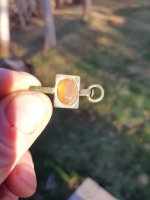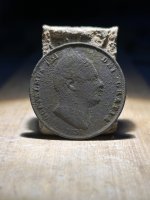TNC
Tenderfoot
Greetings everyone! I have a unique project and could really use some expert advice. First, I'm a woodworker who really enjoys making pens. How that connects to this forum is that I'm researching ways to use petrified wood as the material for a pen. So far I'm golden on how to cut the stock pieces, but where I'm still lacking in certainty is drilling and turning.
What I've found is that a diamond coated sintered core bit is the best way to go for drilling, with good water flow for cooling and evacuation. Does anyone have any other ideas/recommendations for that?
Secondly, for the actual turning process. I know a steel chisel is almost guaranteed not going to cut it (sorry, bad pun). I have carbide tipped chisels, but again I'm uncertain if that would destroy the cutting edge or possibly shatter the stone. Would it be best to use diamond grit files and simply shave down the stock piece, "wet sand" as it were?

Any and all advice is both welcome and appreciated. Thanks for reading!
What I've found is that a diamond coated sintered core bit is the best way to go for drilling, with good water flow for cooling and evacuation. Does anyone have any other ideas/recommendations for that?
Secondly, for the actual turning process. I know a steel chisel is almost guaranteed not going to cut it (sorry, bad pun). I have carbide tipped chisels, but again I'm uncertain if that would destroy the cutting edge or possibly shatter the stone. Would it be best to use diamond grit files and simply shave down the stock piece, "wet sand" as it were?

Any and all advice is both welcome and appreciated. Thanks for reading!







